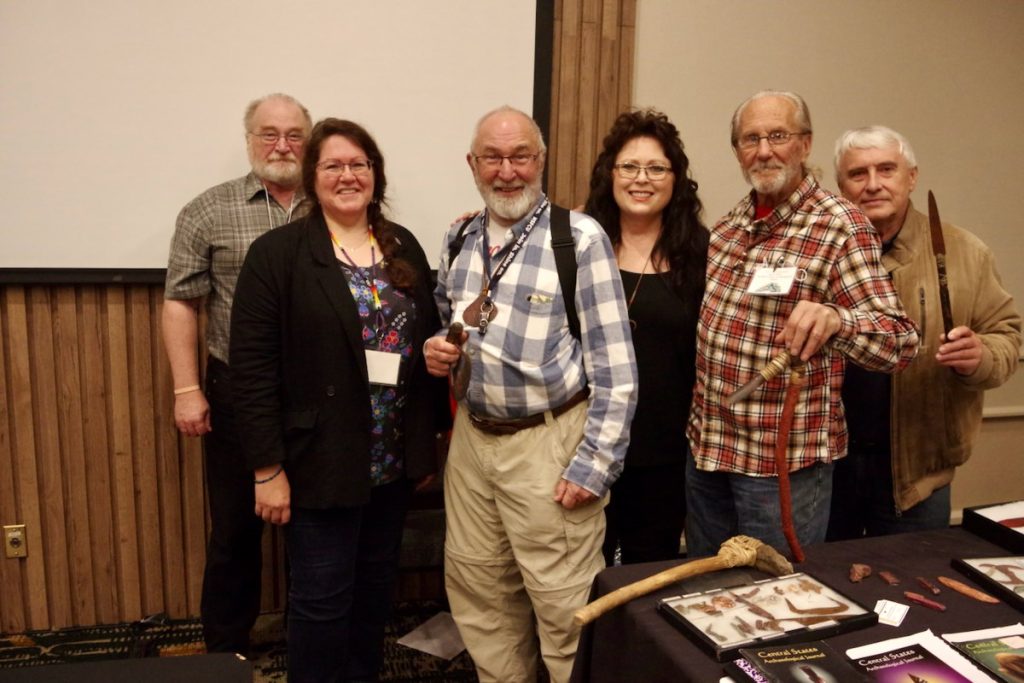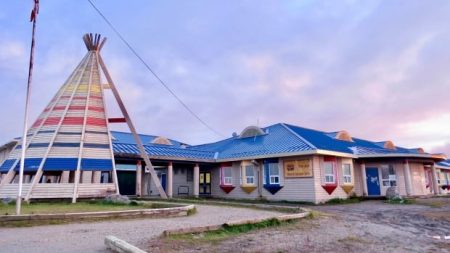THUNDER BAY – The Ontario Archaeological Society’s (OAS) 2024 Annual Symposium featured displays on the prehistoric copper tradition round Lake Superior and residential colleges in addition to workshops and excursions on Oct.
THUNDER BAY – The Ontario Archaeological Society’s (OAS) 2024 Annual Symposium featured displays on the prehistoric copper tradition round Lake Superior and residential colleges in addition to workshops and excursions on Oct. 25-27 in Thunder Bay.
“I love prehistoric copper, the people that created it, the fact that not enough people know about it and it’s so hugely important,” says Robin Hammer Mueller, a researcher from Michigan. “That’s what started the first metalworking in North America and people aren’t aware of that.”
Mueller delivered a presentation on Oct. 27 through the Gitchigami’s Name: A Collaborative Method to Native Copper of the Archaic within the Northern Lake Superior Basin session.
She says the copper within the Lake Superior area is 99.9 per cent pure and Indigenous individuals had been creating instruments with it 2,000 years earlier than the pyramids had been inbuilt Egypt.
“One of the pieces I have is a one-eyed needle, so they were creating one-eyed needles out of pieces of copper,” Hammer Mueller says. “If they needed to scrape something, they made it; whatever tool they needed they just picked up a piece of copper, they thought about it and they created it,” stated Mueller.
Jill Taylor-Hollings, co-chair of the symposium, president on the OAS and analysis affiliate at Lakehead College, additionally careworn how Indigenous individuals used copper to make instruments for 1000’s of years through the symposium, which was held at Lakehead College and the Valhalla Resort and Convention Centre.
“Indigenous people have been using copper to make their tools for thousands of years in this area, much earlier than even in European context, so that’s something we want to stress,” Taylor-Hollings says.
“People have lived here for so very long, 10,000 years, and there are a lot of archaeological sites in this area that need to be addressed and looked after and care-taking being done with communities in this area. So we’re talking about also how to work with communities and having more archaeological control of their own area.”
Scott Hamilton, anthropology professor at Lakehead College, delivered the Indian Residential Colleges: Anthropology’s Pathway In direction of Reconciliation presentation on the symposium on Oct. 26.
“The key point is that a lot of technical skills that are needed in the (residential school) searches involve disciplines like archeology but it’s very important to think of it as a kind of service to communities rather than an academic research inquiry,” Hamilton says.
Hamilton says it was good to see a big turnout on the symposium, together with a big contingent from the higher midwest.
“That speaks to the already existing relationships between the professionals and the avocationals in both the Thunder Bay area and in Minnesota, Wisconsin and Michigan,” Hamilton says.
Clarence Surette, co-chair of the symposium, president of the Thunder Bay Chapter of the OAS and archeology technician and curator of the collections at Lakehead College, stated additionally they did a tour of the Thunder Bay Museum, together with the exhibit: A Journey By way of Time: Archaeology of Northwestern Ontario and the Lake Superior Space.
That exhibit was introduced by the Thunder Bay Chapter of the OAS in partnership with the Division of Anthropology at Lakehead College, the Thunder Bay Museum and Woodland Heritage Northwest.
“Some of the key things (in the exhibit are) several belongings from the Thunder Bay area,” Surette stated.
“We now have a big biface (hand axe) that’s about (a foot) lengthy. It’s made out of fabric from North Dakota known as Knife River Flint, and mainly it’s one of many largest of its form,” she stated.
“One piece was discovered on Mission Island and the opposite piece was discovered within the East Finish. We now have a number of artifacts from the Paleo interval so that they’re mainly 9,000 years outdated.”
A Journey By way of Time: Archaeology of Northwestern Ontario and the Lake Superior Space runs on the Thunder Bay Museum till March 2025.








